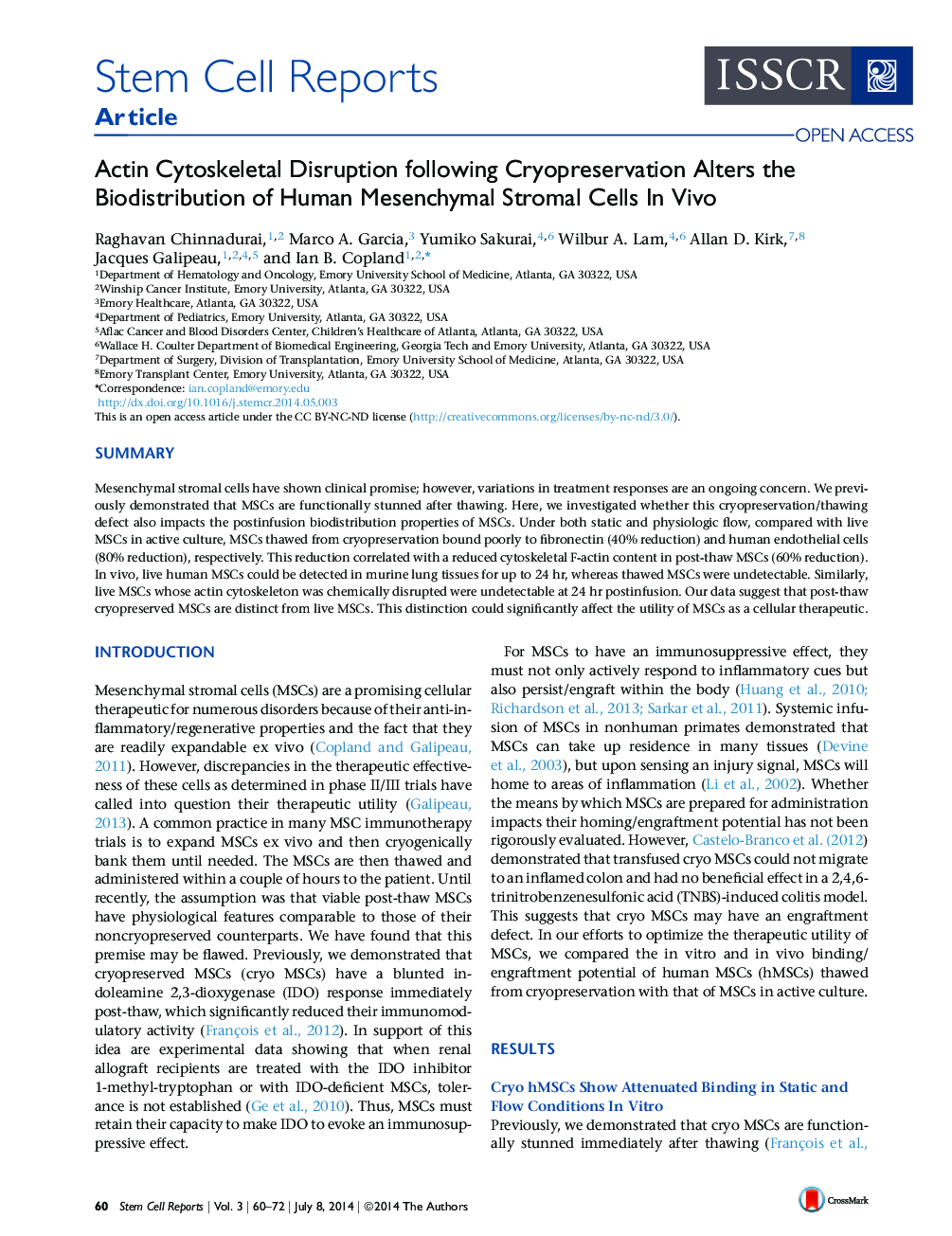| Article ID | Journal | Published Year | Pages | File Type |
|---|---|---|---|---|
| 2093381 | Stem Cell Reports | 2014 | 13 Pages |
•Immediately after thawing, MSCs display attenuated binding and engraftment potential•Immediately after thawing, MSCs display defective actin polymerization•Disrupting actin cytoskeleton in MSCs replicates post-thaw MSC engraftment defect•A 48 hr culture recovery of MSCs post-thaw restores in vivo engraftment potential
SummaryMesenchymal stromal cells have shown clinical promise; however, variations in treatment responses are an ongoing concern. We previously demonstrated that MSCs are functionally stunned after thawing. Here, we investigated whether this cryopreservation/thawing defect also impacts the postinfusion biodistribution properties of MSCs. Under both static and physiologic flow, compared with live MSCs in active culture, MSCs thawed from cryopreservation bound poorly to fibronectin (40% reduction) and human endothelial cells (80% reduction), respectively. This reduction correlated with a reduced cytoskeletal F-actin content in post-thaw MSCs (60% reduction). In vivo, live human MSCs could be detected in murine lung tissues for up to 24 hr, whereas thawed MSCs were undetectable. Similarly, live MSCs whose actin cytoskeleton was chemically disrupted were undetectable at 24 hr postinfusion. Our data suggest that post-thaw cryopreserved MSCs are distinct from live MSCs. This distinction could significantly affect the utility of MSCs as a cellular therapeutic.
